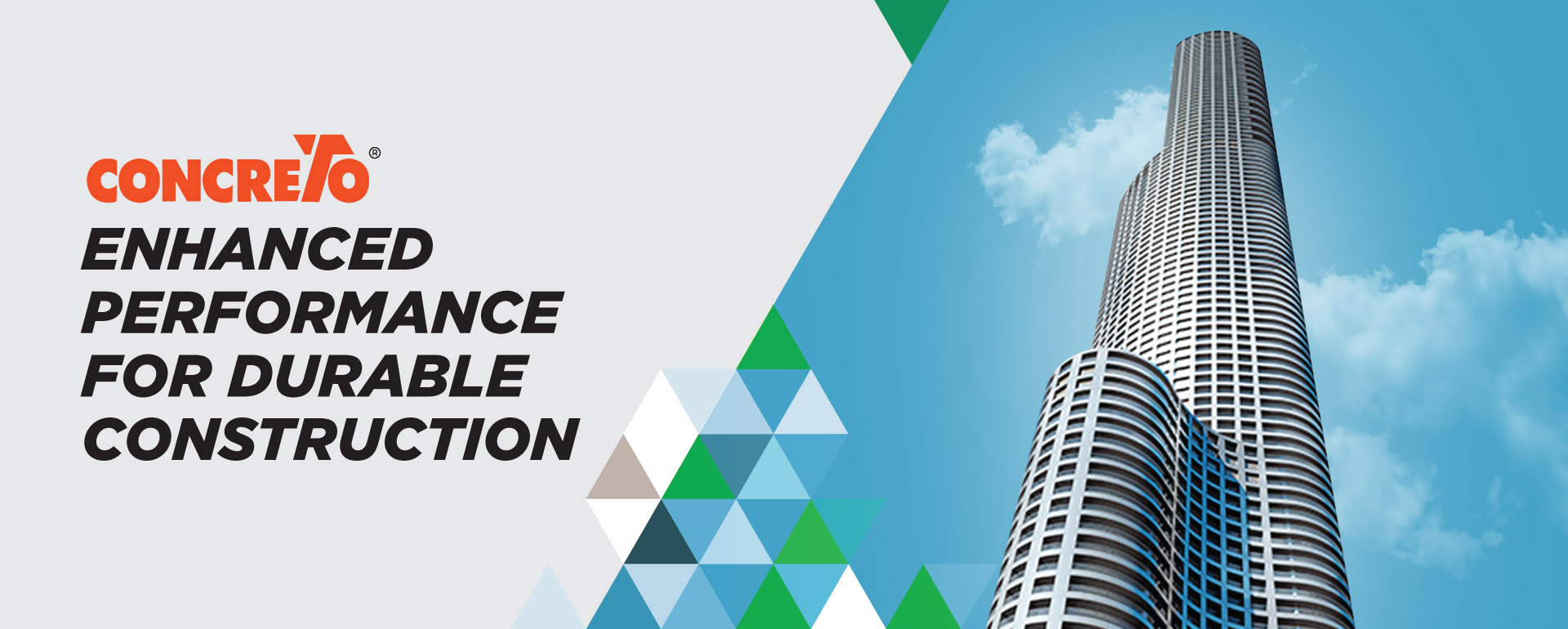
RMX Concreto UNO
Concreto Uno concrete is designed to be water-repellent. Its advanced mix design significantly reduces capillary absorption, preventing water from being absorbed into the surface. This results in negligible surface water absorption compared to standard concrete, ensuring that water cannot penetrate the concrete structures.
View More
Concreto Agile Flow
Concreto Agile Flow is a free-flowing concrete having a flow/slump of 400 to 500 mm. It has been designed using technologically advanced admixtures and unique concrete design with high workability.
View More
Concreto Agile
Concreto Agile is a range of self-compacting, self-levelling and free-flowing concrete. Its free-flowing property eliminates the need for vibration and allows easy placement; thereby reducing the number of pour points on a worksite.
View More
Concreto Robuste
Concreto Robuste is a high grade, high-performance concrete for 50 to 100 + MPa strength. RCC designs can be optimized for cost-effective concrete, and it’s good for high rise structural requirements.
View More
Concreto Xlite
This is a low density (800 – 1800 kg/cu.m) concrete thermal insulation which enhances thermal induction and effectively replaces brickbat coba, concrete screed, protection screed thereby reducing the dead load on existing structures.
View More
Concreto Fluide
Concreto Fluide is high flow workable concrete ideal for piling in a large area. It has been designed using the latest technological advances in superplasticizers and unique concrete design techniques to create concrete with high workability.
View More
Polibre concrete
Polibre concrete is ready mix polypropylene fiber reinforced concrete which helps to control shrinkage & micro cracks at an early stage and improves overall quality of structure
View More
Concreto Steelibre
Concreto Steelibre is a steel fiber reinforced ready-mix concrete with increased ductility allowing superior load-bearing capacity, and economic & safer floors.
View More
Concreto Instante
Concreto Instante is a reliable ready-mix concrete that plummets the rate of hydration. It is used at construction sites where the structures require early strength for faster removal of formwork without hindering quality.
View More
Concreto Lente
Concreto Lente is a ready-mix solution that slows down the hydration process of cement effectively, thereby postponing the setting of concrete while creating no adverse effect on the performance of hardened concrete.
View More
Concreto Regletherme
Concreto Regletherme is designed to reduce the elevation of concrete temperature due to high heat of hydration, thus reducing the thermal stress, in mass concrete.
View More
Concreto Corrosafe
Concreto Corrosafe is a double–action, corrosion-resistant concrete with service life prediction, designed with the help of a MCI-based corrosion-resistant admixture. Advanced concrete mix design also helps increase density and durability.
View More
Concreto Ecodure
Concreto Ecodure is produced by carefully proportioning all concrete ingredients with cement, pozzolanic materials and a special chemical admixture, which is effective in controlling thermal cracking in mass concrete foundation and offering improved durability.
View More
Concreto Permadure
Concreto Permadure is a special type of concrete that ensures dense and durable concrete structure by resisting water seepage and minimizing plastic shrinkage cracks in concrete elements.
View More
Concreto EasyFille
Concreto EasyFille is a low strength, pumpable lean concrete used for filling of areas as backfill as an alternative to a compacted fill and as PCC for foundation base with low compressive strength is easy to place.
View More
Concreto XLite Structural
Concreto XLite Structural is a lightweight structural concrete having a density range of 1100 kg/cu.m to 2200 kg/cu.m, giving strength ranging from 10 MPa to 25 MPa. It is designed by replacing coarse aggregate with LECA (Lightweight expended clay aggregate).
View More
Concreto CWT Plus
CWT High-performance water-resistant concrete. It ensures water-tightness by reducing permeability and healing microcracks of the concrete.
View More




